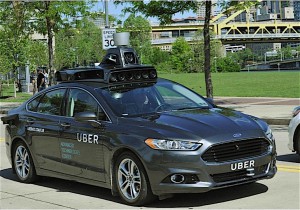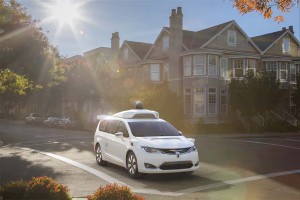
The new U.S. Senate bill will eliminate a state's ability to establish different autonomous driving rules than the federal government.
A U.S. Senate committee appears to be the last major obstacle in the way of widespread testing of self-driving and even driverless vehicles on public roads.
Last month, the U.S. House of Representatives passed the SELF DRIVE Act, a measure intended to streamline the development process for autonomous technology by limiting state and even some federal regulations. Within three years, the measure would allow automakers and others developing self-driving vehicle technology to put as many as 100,000 prototype vehicles on the road annually.
Proponents say the measure, which must now be approved by the Senate, will greatly reduce highway accidents, injuries and fatalities while also improving the flow of traffic in increasingly crowded urban areas. Critics, however, warn that the proposal will turn the public into “crash dummies.”
Currently, automakers hoping to test their increasingly sophisticated self-driving technologies have to cope with a maze of federal and state regulations. About a half-dozen states have either passed rules permitting testing of autonomous vehicles on public roads or ruled that existing laws authorize such tests.
The SELF DRIVE Act would largely override state laws, although some local regulation would stand, notably licensing, registration and insurance rules. And vehicles could still be ticketed for violating highway regulations. At the federal level, the vehicles would be exempt from some automotive safety standards, as well.
(Trump Administration releases guidelines on autonomous vehicle testing. For the story, Click Here.)
Under the measure before the Senate, 50,000 autonomous prototypes would be allowed on the roads during the first year after passage, the figure rising to 75,000 the second year and 100,000 in subsequent years.
“Human error. According to government data, it’s a factor in 94% of all crashes, and it’s taking a growing number of lives after decades of decline.” declared one of the new ads launched this week by the Coalition for Future Mobility, a trade group consortium, in an effort to win support on Capitol Hill. “So imagine how much safer our roads would be with Autonomous Vehicles,” say the ads. “Tell Congress to greenlight Autonomous Vehicle testing and deployment.”
Proponents of self-driving technology, such as Renault-Nissan Alliance CEO Carlos Ghosn, contend that autonomous vehicles will ultimately usher in an era of “zero fatalities.” They also contend that such vehicles will be able to better use existing roadways, significantly improving traffic flow and, in the process, improving fuel efficiency.
But not everyone is so sanguine about a measure that would allow automakers to do things like disable a vehicle’s airbags, steering wheel and pedals when operating in driverless mode. A number of consumer and safety advocates, such as California-based Consumer Watchdog, argue that while the technology may eventually pay off it is too soon to be testing it in large numbers on public roads.
(Click Here for more about the House bill easing autonomous vehicle testing restrictions.)
“The public will be the crash dummies in this experiment,” Joan Claybrook, former head of the National Highway Traffic Safety Administration, told reporters on a telephone conference call this week.
Whether such criticism will sway members of Congress at a time when majority Republicans are pushing for a rollback of regulations is uncertain. And the proposal has also seen a split among safety and consumer advocates, some contending that the proposed measure will ultimately benefit millions of Americans, including many who now have only limited access to personal mobility.
“Autonomous Vehicle technology presents tremendous potential benefits for the blind and other Americans with disabilities,” said Mark A. Riccobono, president of the National Federation of the Blind. “From more reliable transportation to greater access to employment, automated vehicles could be a valuable tool allowing the blind to live the lives we want. Autonomous Vehicle technology must be accessible to everyone through nonvisual user interface options and nondiscriminatory public policy.”
(To see more about the U.S. House’s broad autonomous vehicle bill, Click Here.)
If the Senate version of the SELF DRIVE Act clears its committee it would then move to the full chamber for a vote. At that point, representatives from the two chambers would meet to work out any differences. But with the generally positive support already generated, a final measure could be passed into law within months.

